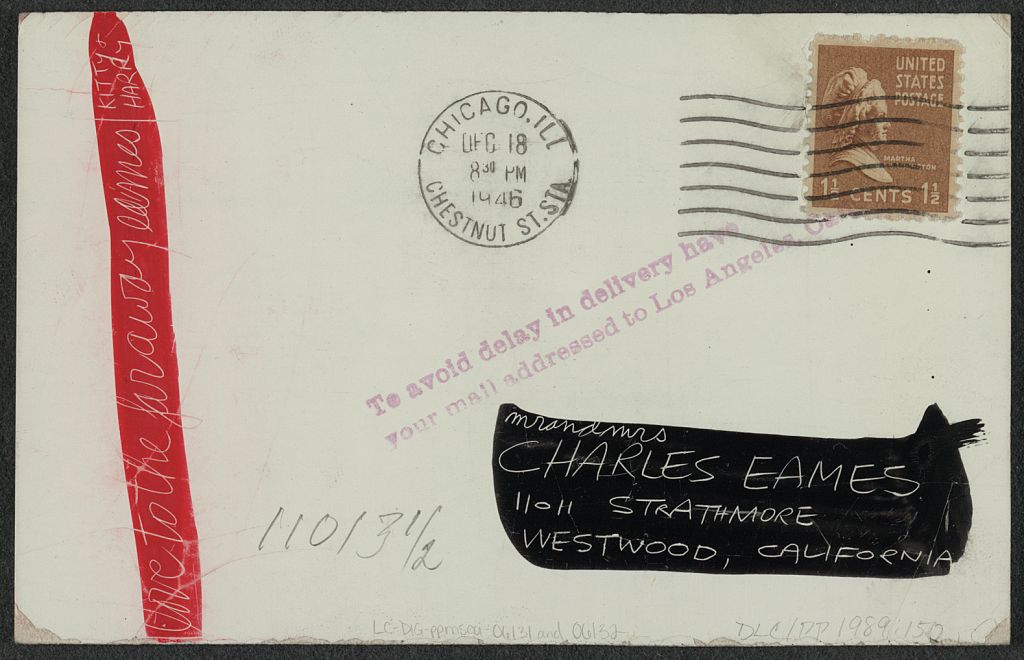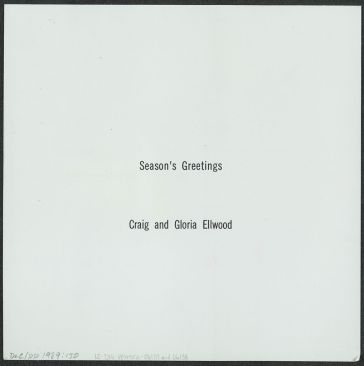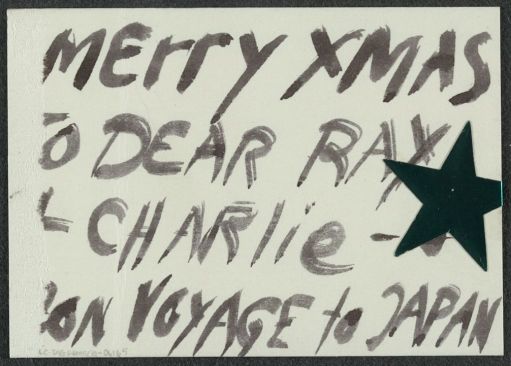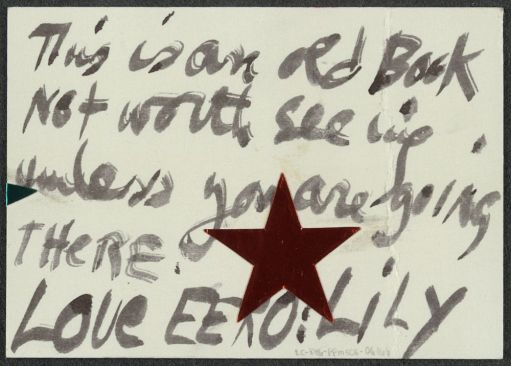The Library of Congress, in Washington, D.C., houses nearly one million pieces of ephemera from the lives of Ray and Charles Eames. Among the manuscripts, photographs, drawings, films, and slides are hundreds of holiday cards sent to the design icons from family and friends. Documented in the library’s ongoing online exhibition, “The Work of Charles and Ray Eames: A Legacy of Invention,” and available in its digital archive, the collection dates from 1945 to 1986 and includes correspondence from preeminent midcentury architects, designers, and other artists, as well as a few high-profile clients. We spent an afternoon sorting out who’s who in this unassuming yet star-studded card collection. You can see all of the cards here.
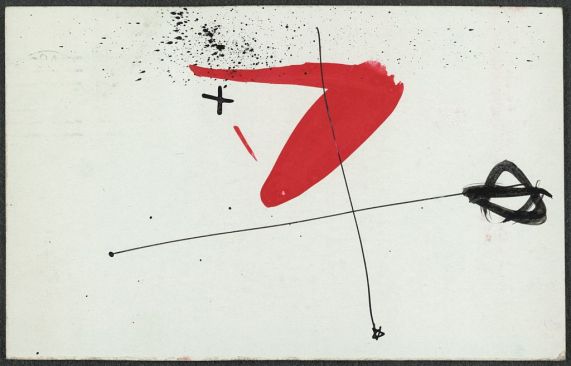
A holiday card from Chicago architect Harry Weese and his wife, Kitty Baldwin Weese, sends “love to the far away Eames.” Weese and both Eameses studied together at the Cranbrook Academy of Art, in Bloomfield Hills, Mich., where Eames would later lead the industrial design department. From 1947 to 1957, Kitty co-owned and operated the Baldwin Kingrey design store in Chicago, a first-of-its-kind operation selling architect-designed furniture and other objects—including those by the Eameses—at a price-point amenable to middle-class buyers.

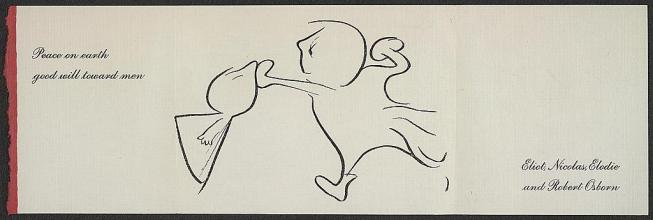
From cartoonist and satirist Robert Osborn, whose work appeared in publications such as The New Republic,
Harper’s, Fortune, and Life.
The late Los Angeles–based Modernist architect Craig Ellwood began his design career as an estimator for the 1949 Entenza House—also known as Case Study No. 9, part of a series of homes sponsored by Arts & Architecture and editor John Entenza—which was designed by Charles Eames and Eero Saarinen on the lot adjacent to the Eames House (Case Study No. 8). Ellwood would go on to add three Case Study Houses of his own to the program during his prolific architecture career in Southern California.
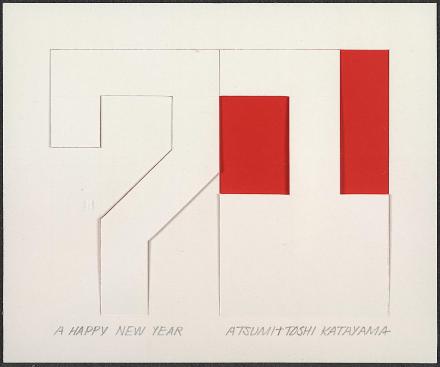
From the graphic designer Toshihiro Katayama and his wife, Atsumi Fukui Katayama. Katayama served as the Director of the Carpenter Center for Visual Arts at Harvard University from 1990 to 1995.
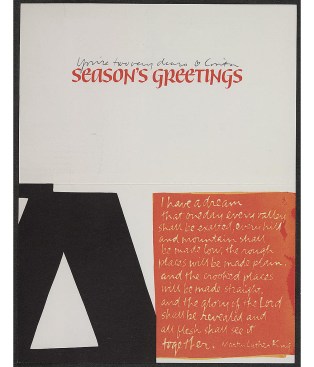
Sister Corita Kent, a Catholic nun and art professor at the former Immaculate Heart College in Los Angeles, turned religious art on its head with the guidance and friendship of contemporaries including Ray and Charles Eames, Buckminster Fuller, and others. Her work mixed graphic patterns, text, and iconography to address issues including civil rights, gender, and international conflict.
Eero Saarinen and Charles Eames met while teaching at Cranbrook and went on to collaborate on various design projects, including furniture made using the then-experimental process of molded plywood. This holiday greeting was penned by Saarinen and his first wife, the sculptor Lilian Swann Saarinen. The two divorced in 1953.
Max De Pree, who with his wife Esther sent this card to the Eames in the late 1950s, would go on to lead the Herman Miller furniture company, founded by his father D.J. De Pree and for which the Eameses designed a large collection of Modern furniture. In 1954, the Eames Office built the younger De Pree a timber-framed house in Zeeland, Mich., which the family inhabited until 1975. It was purchased by Herman Miller in 2010 for restoration and preservation.
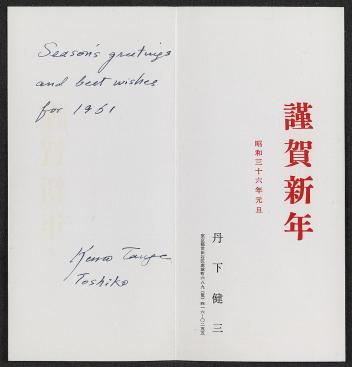
From the late Japanese architect and 1987 Pritzker Prize winner Kenzō Tange.
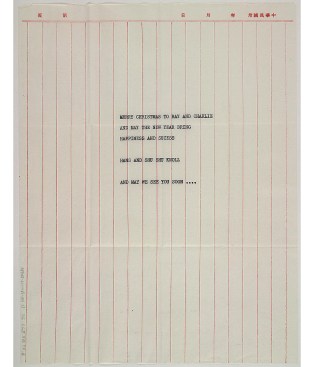
Midcentury architect and furniture designer Florence (aka “Shu”) Knoll Bassett worked with Eero Saarinen and Charles Eames on furniture design early in her career while at Cranbrook. In 1938, her husband Hans Knoll founded the Knoll furniture company, bringing on Florence to help grow the business. She took over operations following Hans’ death in 1958, and designed many of the minimalist commercial-office oriented furniture pieces sold by the company. She also renewed relationships with Cranbrook contemporaries including Saarinen, the Eameses, and Harry Bertoia, to design many now-iconic furniture pieces for Knoll.
